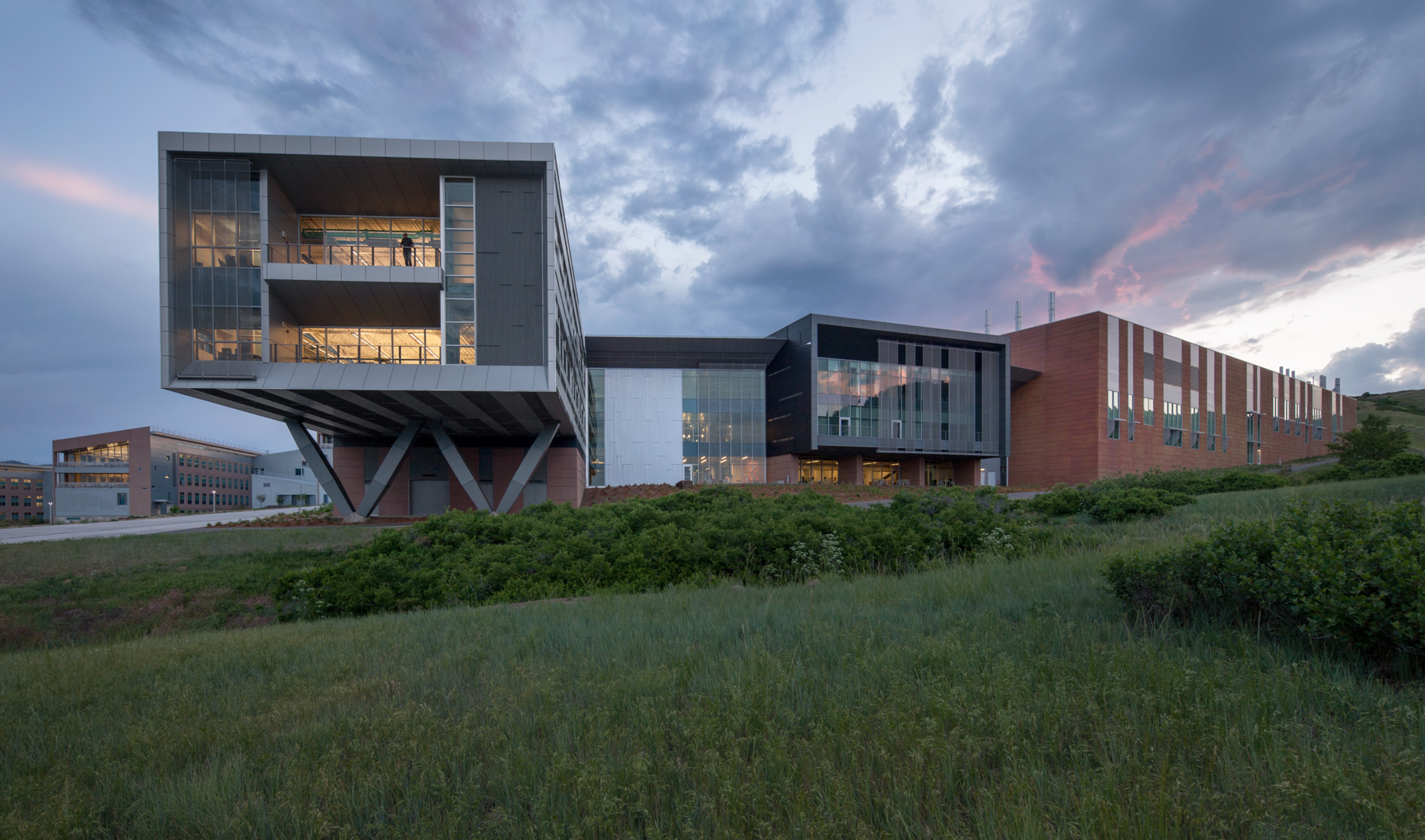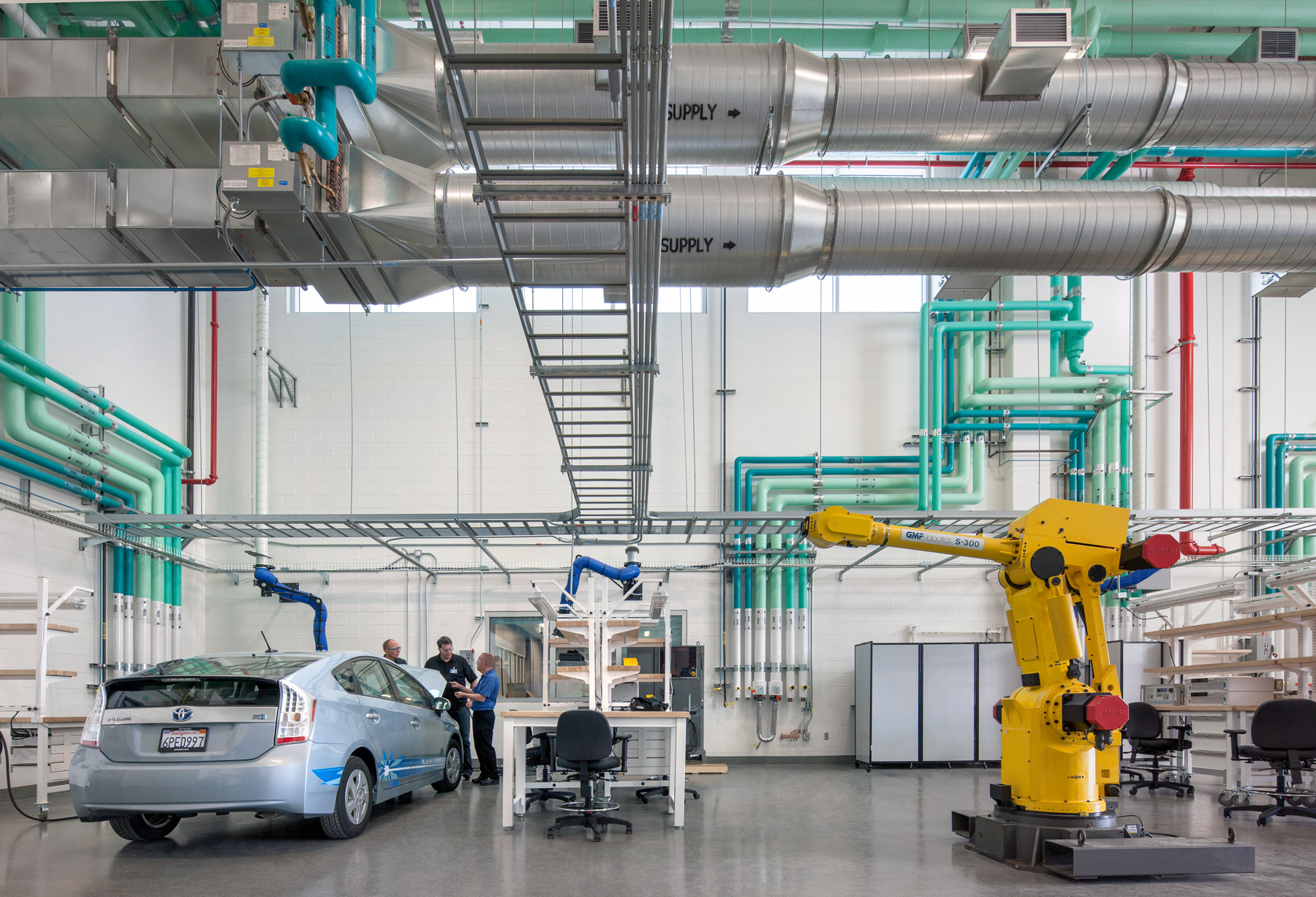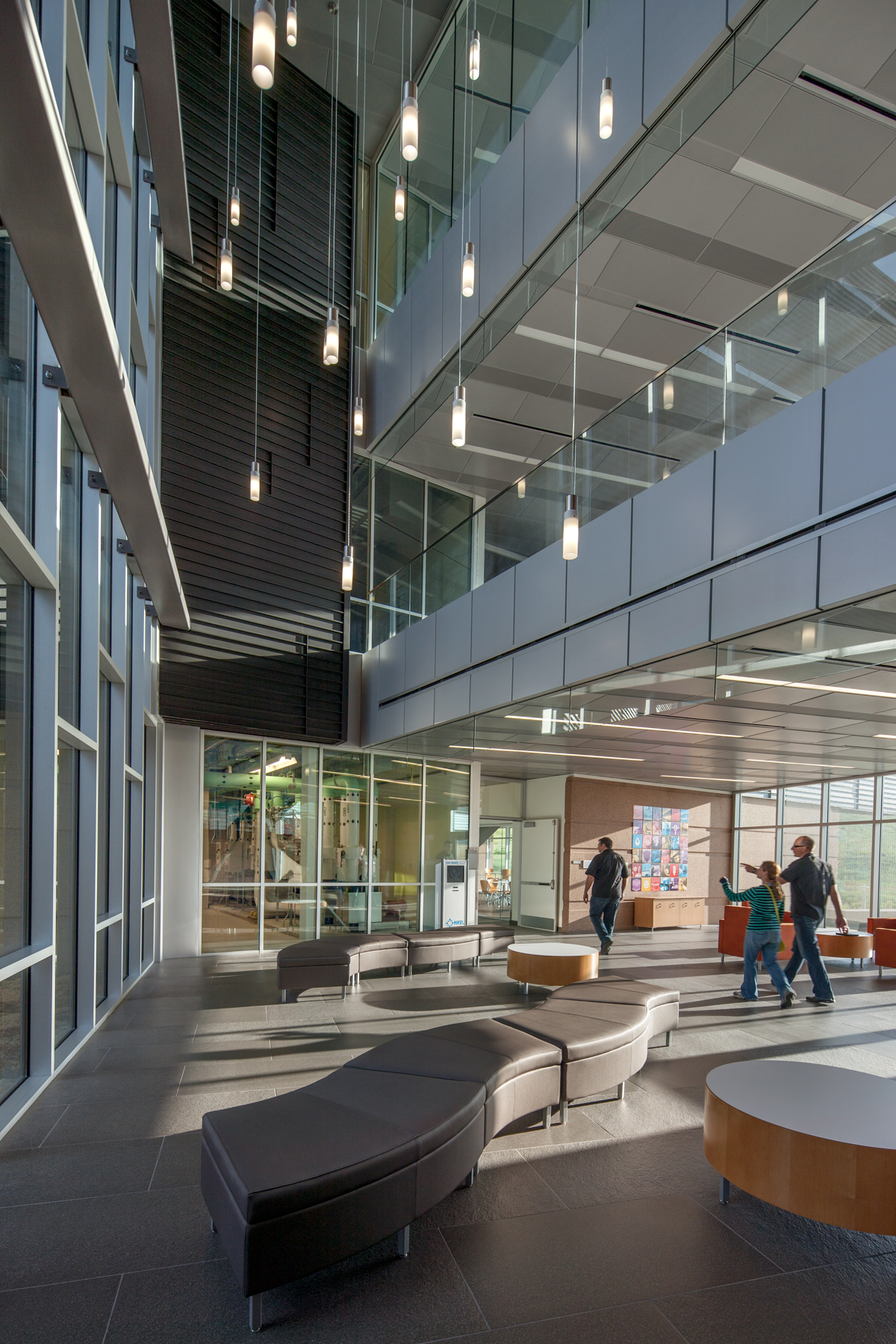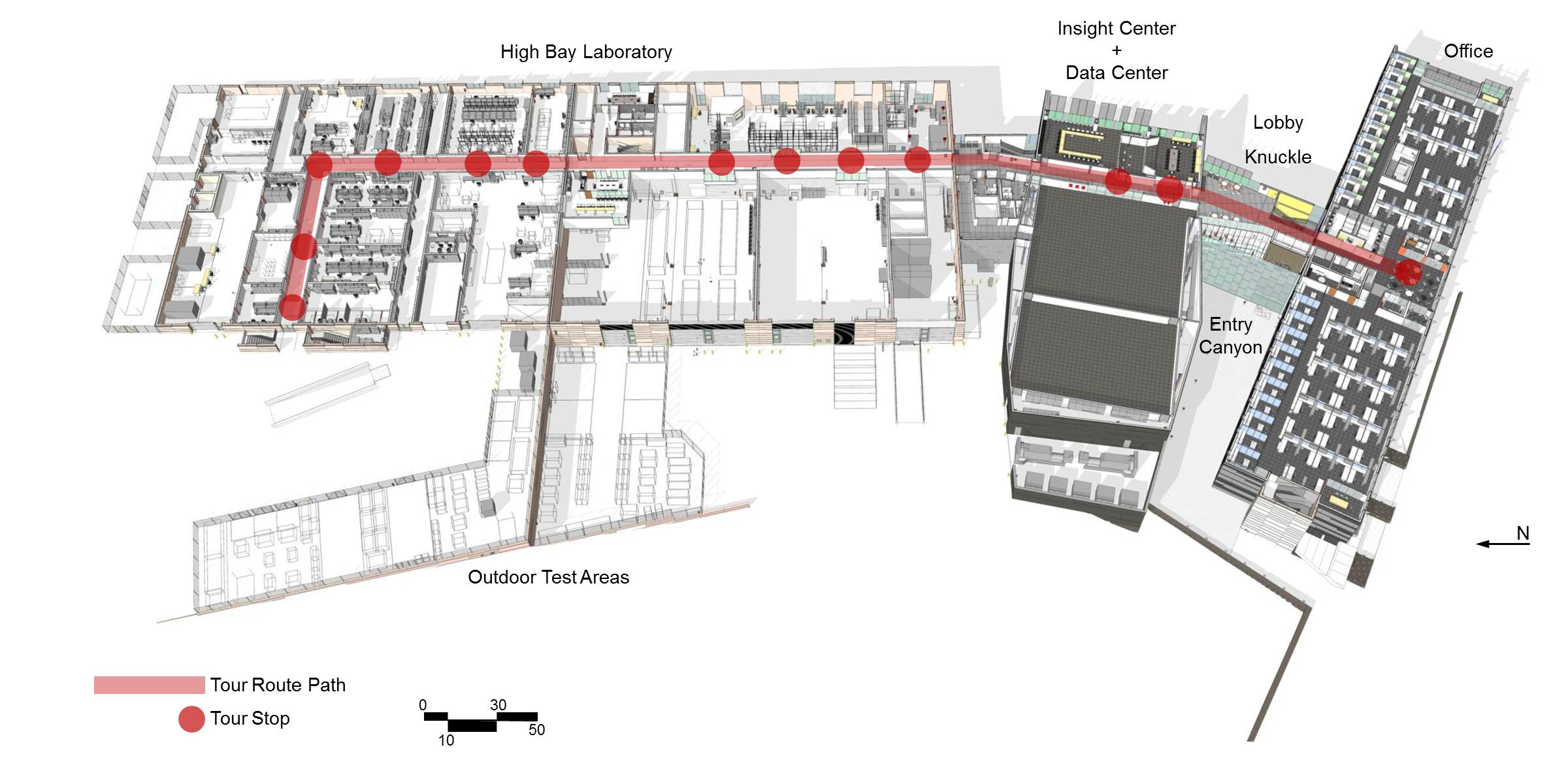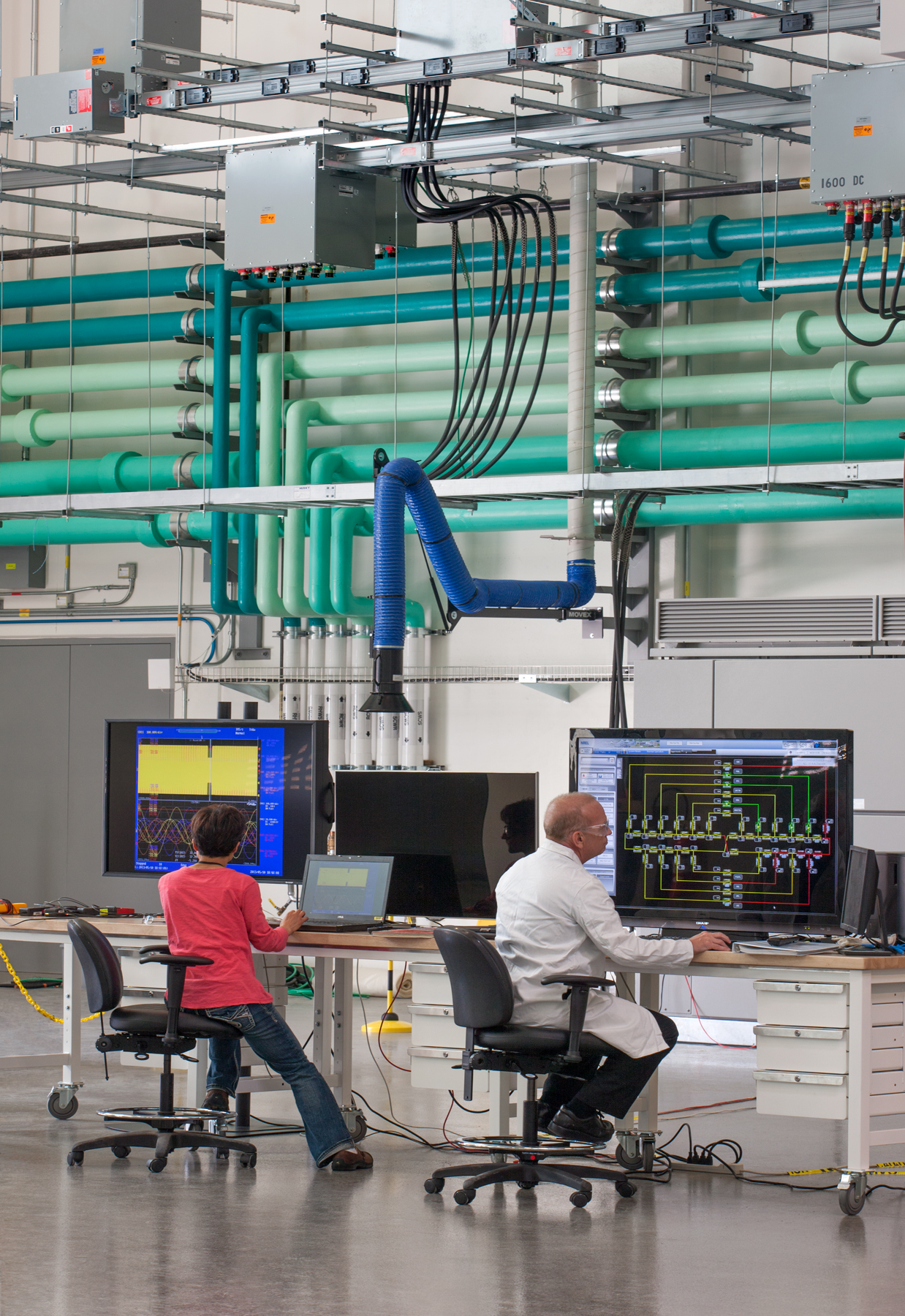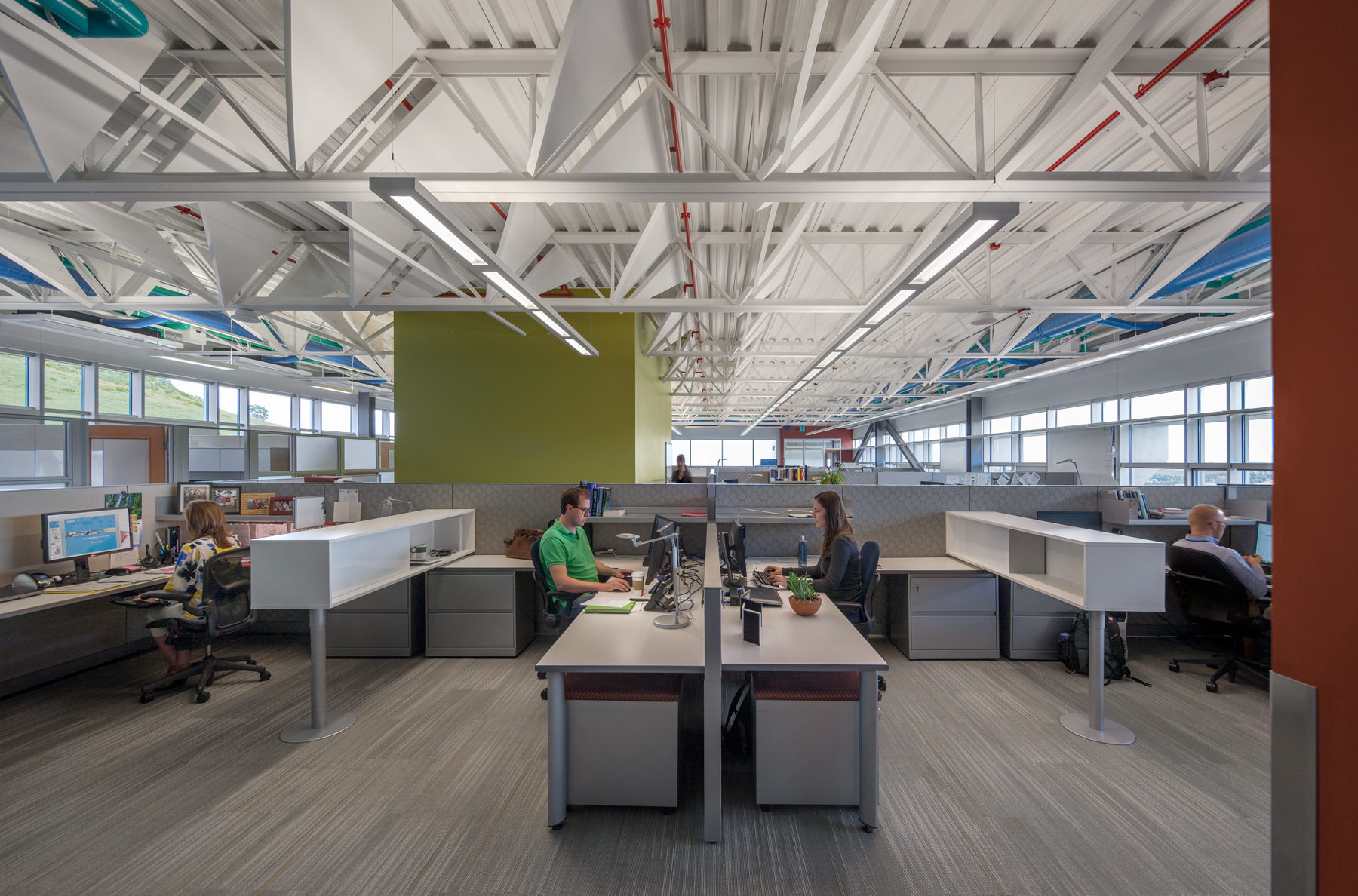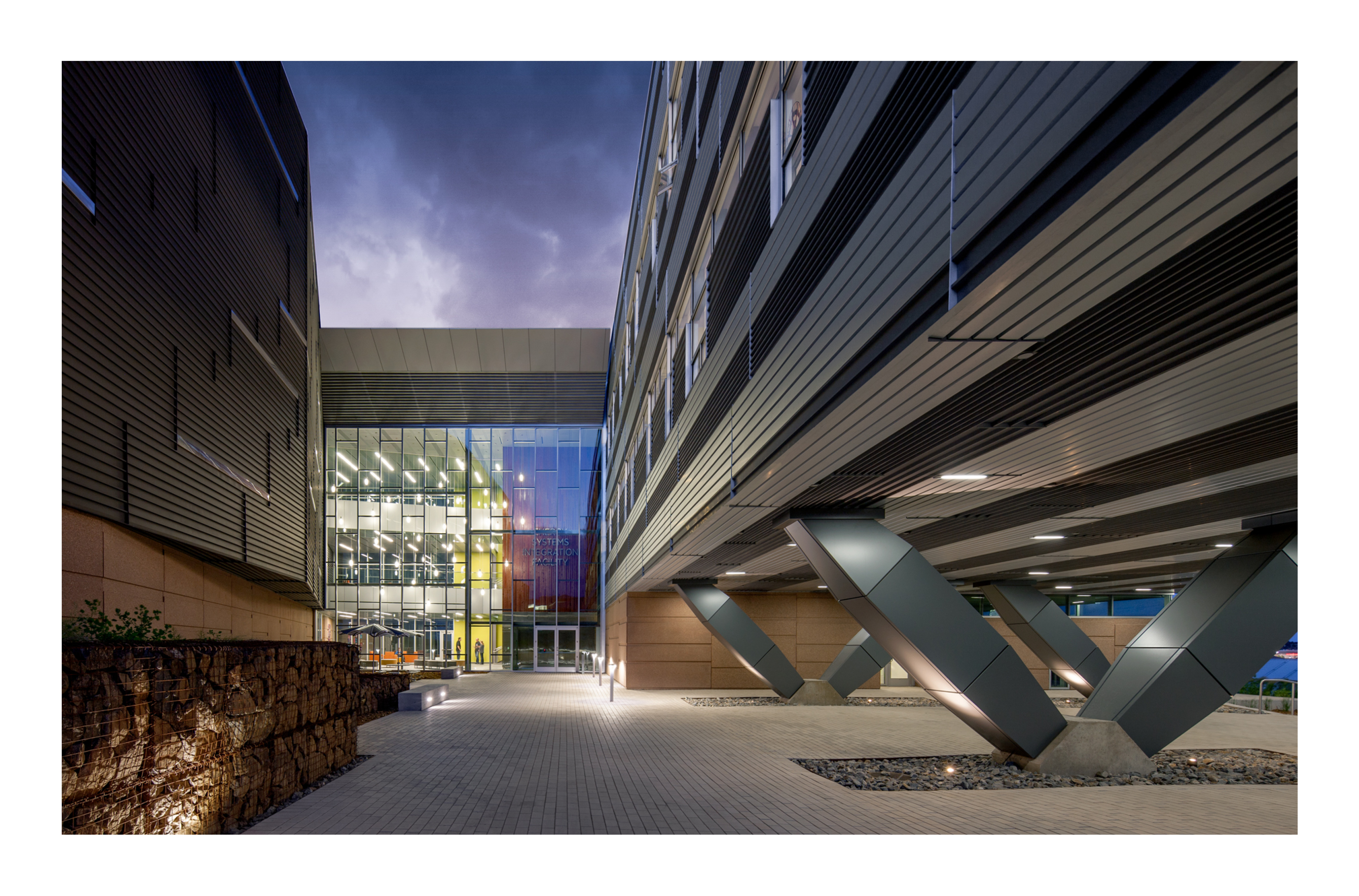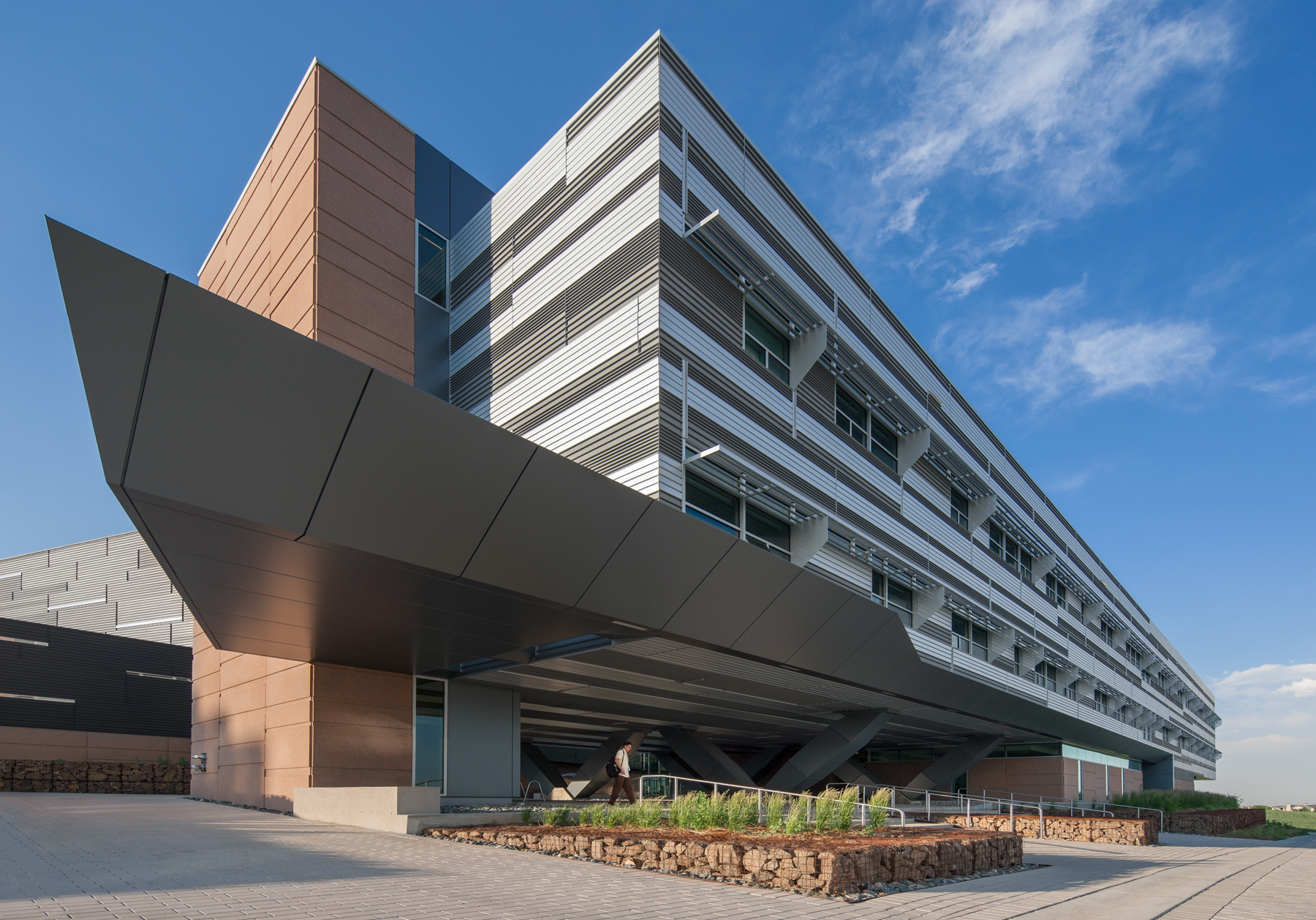One of the nation’s newest and most premier energy research facilities has been named R&D Magazine’s 2014 Laboratory of the Year.
Designed and built by SmithGroupJJR and JE Dunn Construction, the $135 million Energy Systems Integration Facility (ESIF) is located at the U.S. Department of Energy’s National Renewable Energy Laboratory in Golden, Colorado. Its one-of-a-kind design will assist NREL, and its partners, to shape the energy systems of the future.
The prestigious and international Lab of the Year competition, which is in its 48th year, recognizes the best new and renovated laboratories that combine all aspects of the building into a superior working environment. It showcases new and emerging thinking, sustainable practices and creative responses to challenges in the design, construction and operation of modern laboratories.
ESIF received this significant award for being a first-of-its-kind 182,500 sf research user facility with a unique merging of three very specialized components: an ultra-energy efficient workplace that consumes 74% less energy than the national average for office buildings, one of the world’s most energy efficient high performance computing data centers, and sophisticated high-bay laboratory spaces with outdoor test areas.
All of the labs are connected by a research electrical distribution bus (REDB), which functions as a power integration circuit capable of connecting multiple sources of energy with experiments.
The unique design of the facility, which houses 200 researchers, works in tandem to advance NREL’s sustainable mission of integrating clean and sustainable energy technologies into the grid.
“To have the ESIF facility, which advances research capabilities that don’t exist anywhere else in the world, recognized for such a prestigious award only proves the hard work and dedication of the project team,“ states Brad Woodman, AIA, LEED AP BD+C, vice president and director of SmithGroupJJR’s Phoenix office. “Congratulations to the entire ESIF team for a job well done on a project that will change the future of energy thought and use worldwide.”
Responsive Design
A showcase of sustainable design, the ESIF incorporates the best in energy efficiency, environmental performance, and advanced controls using a “whole building” integrated design approach that complies with Energy Star standards.
SmithGroupJJR and JE Dunn worked together to support the Department of Energy’s goal to develop an energy efficient building that imparts minimal impact on the environment. The ESIF earned a LEED Platinum rating from the U.S. Green Building Council, and is one of the highest certified facilities of its type to include a high performance computing data center as a major building component.
To construct such a unique facility the design-build team applied technology, like real time electronic drawings accessible through portable kiosks and hand held tablets allowing for a 100% paperless process, to deliver the project in a highly collaborative and accelerated pace while maintaining the strictest standards of quality and sustainable strategies. The building was dedicated in September 2013.
“Our team was continually challenged and encouraged to think outside the box which lead to this tremendous outcome,” shares Rodd Merchant, senior vice president at JE Dunn Construction and manager of the design-build team. “This award serves as an acknowledgement that hard work pays off.”
Unique Capabilities
Central to the laboratories is the REDB, the nation’s first integrated, megawatt-scale hardware-in-the-loop real-time simulation system. The REDB allows researchers and manufacturers to conduct integration tests at full power and actual load levels in real-time simulation, and evaluate component and system performance before going to market.
Running parallel with the REDB is the Supervisory Control and Data Acquisition (SCADA) system that monitors and controls facility-based processes and gathers and disseminates real time data for collaboration and visualization. Both systems were engineered by Affiliated Engineers, Inc. (AEI).
A petascale high performance computing data and visualization center extends the ESIF’s research capabilities and enables large-scale modeling and simulation of material properties, processes, and fully integrated systems that would be cost-prohibitive to study by direct experimentation.
SmithGroupJJR, a recognized leader in architecture, engineering, and planning, served as designer, lab planner and engineer of the three-story research complex. The firm also received a Lab of the Year Special Mention in 2008 for their work on NREL’s Science & Technology Facility. JE Dunn Construction performed as general contractor for the design-build venture. AEI engineered the high bay laboratory spaces and the REDB and SCADA systems.
Judging for this year’s competition was performed by an expert panel of architects, engineers, equipment suppliers, researchers and the editors of R&D Magazine, Laboratory Design newsletter, and co-sponsor Scientific Equipment and Furniture Association (SEFA).
Awards for the Laboratory of the Year competition will be presented at the 2014 Laboratory Design Conference on April 3, at the Westin Waltham Boston Hotel in Massachusetts.
About the Team
SmithGroupJJR (www.smithgroupjjr.com) is ranked as one of the nation’s top design firms by Architect, the magazine of the American Institute of Architects. The firm’s nationally recognized Science & Technology Practice has completed the planning and design of over 18 million square feet of academic, corporate and government research laboratories across the U.S., ranging from small laboratory renovations to large research campuses. A national leader in sustainable design, SmithGroupJJR has 351 LEED professionals and 102 LEED certified projects.
JE Dunn Construction (www.jedunn.com) maintains local offices in Denver and Colorado Springs, providing quality construction throughout the Rocky Mountains. JE Dunn Construction Company is the 12th largest domestic building contractor in the United States with 20 offices in 14 states. With more than 61 LEED professionals in Colorado and more than 100 LEED certified projects around the country, JE Dunn is a nationally ranked sustainable contractor.
Affiliated Engineers, Inc. (www.aeieng.com) is a multi-disciplinary consulting engineering firm specializing in technically complex projects nationally and internationally in the research, healthcare, energy and utilities, industrial, and sustainability markets. Building Design + Construction magazine’s #1 Science & Technology Engineering Firm, AEI has received five R&D Magazine Laboratory of the Year Awards, including three of the last four and eight other LOY honors. With 157 LEED-certified professionals in twelve offices, AEI has designed and engineered 147 LEED-accredited projects.
Related Stories
| Jan 4, 2011
Product of the Week: Zinc cladding helps border crossing blend in with surroundings
Zinc panels provide natural-looking, durable cladding for an administrative building and toll canopies at the newly expanded Queenstown Plaza U.S.-Canada border crossing at the Niagara Gorge. Toronto’s Moriyama & Teshima Architects chose the zinc alloy panels for their ability to blend with the structures’ scenic surroundings, as well as for their low maintenance and sustainable qualities. The structures incorporate 14,000 sf of Rheinzink’s branded Angled Standing Seam and Reveal Panels in graphite gray.
| Jan 4, 2011
6 green building trends to watch in 2011
According to a report by New York-based JWT Intelligence, there are six key green building trends to watch in 2011, including: 3D printing, biomimicry, and more transparent and accurate green claims.
| Jan 4, 2011
LEED standards under fire in NYC
This year, for the first time, owners of 25,000 commercial properties in New York must report their buildings’ energy use to the city. However, LEED doesn’t measure energy use and costs, something a growing number of engineers, architects, and landlords insist must be done. Their concerns and a general blossoming of environmental awareness have spawned a host of rating systems that could test LEED’s dominance.
| Jan 4, 2011
LEED 2012: 10 changes you should know about
The USGBC is beginning its review and planning for the next version of LEED—LEED 2012. The draft version of LEED 2012 is currently in the first of at least two public comment periods, and it’s important to take a look at proposed changes to see the direction USGBC is taking, the plans they have for LEED, and—most importantly—how they affect you.
| Jan 4, 2011
California buildings: now even more efficient
New buildings in California must now be more sustainable under the state’s Green Building Standards Code, which took effect with the new year. CALGreen, the first statewide green building code in the country, requires new buildings to be more energy efficient, use less water, and emit fewer pollutants, among many other requirements. And they have the potential to affect LEED ratings.
| Jan 4, 2011
New Years resolutions for architects, urban planners, and real estate developers
Roger K. Lewis, an architect and a professor emeritus of architecture at the University of Maryland, writes in the Washington Post about New Years resolutions he proposes for anyone involved in influencing buildings and cities. Among his proposals: recycle and reuse aging or obsolete buildings instead of demolishing them; amend or eliminate out-of-date, obstructive, and overly complex zoning ordinances; and make all city and suburban streets safe for cyclists and pedestrians.
| Jan 4, 2011
An official bargain, White House loses $79 million in property value
One of the most famous office buildings in the world—and the official the residence of the President of the United States—is now worth only $251.6 million. At the top of the housing boom, the 132-room complex was valued at $331.5 million (still sounds like a bargain), according to Zillow, the online real estate marketplace. That reflects a decline in property value of about 24%.
| Jan 4, 2011
Luxury hotel planned for Palace of Versailles
Want to spend the night at the Palace of Versailles? The Hotel du Grand Controle, a 1680s mansion built on palace grounds for the king's treasurer and vacant since the French Revolution, will soon be turned into a luxury hotel. Versailles is partnering with Belgian hotel company Ivy International to restore the dilapidated estate into a 23-room luxury hotel. Guests can live like a king or queen for a while—and keep their heads.
| Jan 4, 2011
Grubb & Ellis predicts commercial real estate recovery
Grubb & Ellis Company, a leading real estate services and investment firm, released its 2011 Real Estate Forecast, which foresees the start of a slow recovery in the leasing market for all property types in the coming year.
| Jan 4, 2011
Furniture Sustainability Standard - Approved by ANSI and Released for Distribution
BIFMA International recently announced formal American National Standards Institute (ANSI) approval and release of the ANSI/BIFMA e3-2010 Furniture Sustainability Standard. The e3 standard represents a structured methodology to evaluate the "sustainable" attributes of furniture products and constitutes the technical criteria of the level product certification program.


